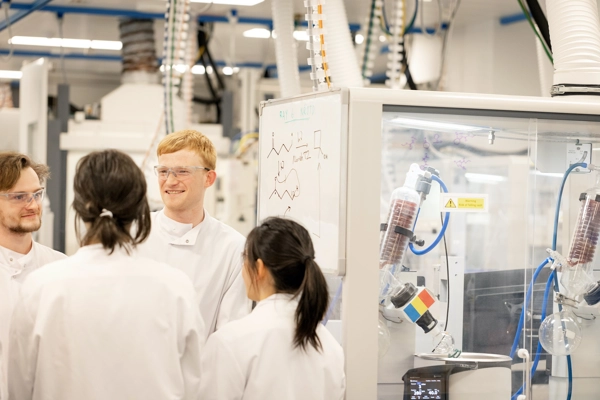22/10/2025
Murata Manufacturing Co., Ltd.
President: Norio Nakajima
Philippine Manufacturing Co. of Murata, Inc. (Batangas, Philippines), a manufacturing subsidiary of Murata Manufacturing Co., Ltd., has completed a new production building that had been under construction since August 2023, and a ceremony to celebrate its completion was held on Wednesday, October 22. The completion of the new building strengthens our global production capabilities as we respond to the medium to long term increase in demand for multilayer ceramic capacitors (MLCCs) driven by the expected future growth of the mobility market.
Scene from the completion ceremony (October 22, 2025)
Overview of the completion ceremony
| Date & Time: | Wednesday, October 22, 2025, 11:00 am–1:00 pm |
|---|---|
| Location: | Philippine Manufacturing Co. of Murata, Inc. Lot 2A Phase 1B First Philippine Industrial Park Barangay Pantay Bata, Tanauan City Batangas, Philippines |
| Guests: | Tereso O. Panga, Director General of the Philippine Economic Zone Authority (PEZA), Kazuya Endo, Ambassador Extraordinary and Plenipotentiary of Japan to the Philippines, and others |
| Company representatives: |
Murata Manufacturing Co., Ltd. President Norio Nakajima, Philippine Manufacturing Co. of Murata, Inc. President Masayoshi Koda, and others |
Overview of the new production building
| Structure and scale: | Reinforced concrete construction; two stories above ground |
|---|---|
| Total floor area: | 77,981 square meters |
| Building area: | 32,454 square meters |
| Purpose: | Manufacturing of multilayer ceramic capacitors |
| Total investment: | Approx. 11.2 billion yen (building only) |
Philippine Manufacturing Co. of Murata, Inc.
| Location: | Lot 2A Phase 1B First Philippine Industrial Park Barangay Pantay Bata, Tanauan City Batangas, Philippines |
|---|---|
| Established: | September 2011 |
| Capital: | 17 billion yen |
| Representative: | Masayoshi Koda |
| Number of employees: | 4,395 (as of the end of September 2025) |
| Business description: | Manufacturing of multilayer ceramic capacitors |
We are building a framework that enables us to respond flexibly to market changes and demand growth by distributing MLCC production bases across Japan, ASEAN, and China to ensure balanced capacity expansion. Below is the schedule for the construction of MLCC-related buildings that were completed, or are planned to be completed, in 2023 and thereafter.
| Subsidiary | Purpose | Start of work | Completion |
|---|---|---|---|
| Murata Electronics (Thailand), Ltd. | Production | July 2021 | March 2023 |
| Izumo Murata Manufacturing Co., Ltd., Iwami Plant (Hane) | Production | March 2022 | April 2023 |
| Wuxi Murata Electronics Co., Ltd. | Production | November 2022 | April 2024 |
| Fukui Murata Manufacturing Co., Ltd. | R&D | December 2023 | February 2026 (tentative) |
| Izumo Murata Manufacturing Co., Ltd. | Production | March 2024 | March 2026 (tentative) |
| Murata Electronics (India) Private Limited | Packaging and shipping (Leased building) | *Signed a lease agreement for the factory space in February 2025 | *Aiming for full-scale operation in FY2026 |
Murata in Brief
Murata Manufacturing Co., Ltd. is a worldwide leader in the design, manufacture and sale of ceramic-based passive electronic components & solutions, communication modules and power supply modules. Murata is committed to the development of advanced electronic materials and leading edge, multi-functional, high-density modules. The company has employees and manufacturing facilities throughout the world.
For more information, visit Murata’s website










